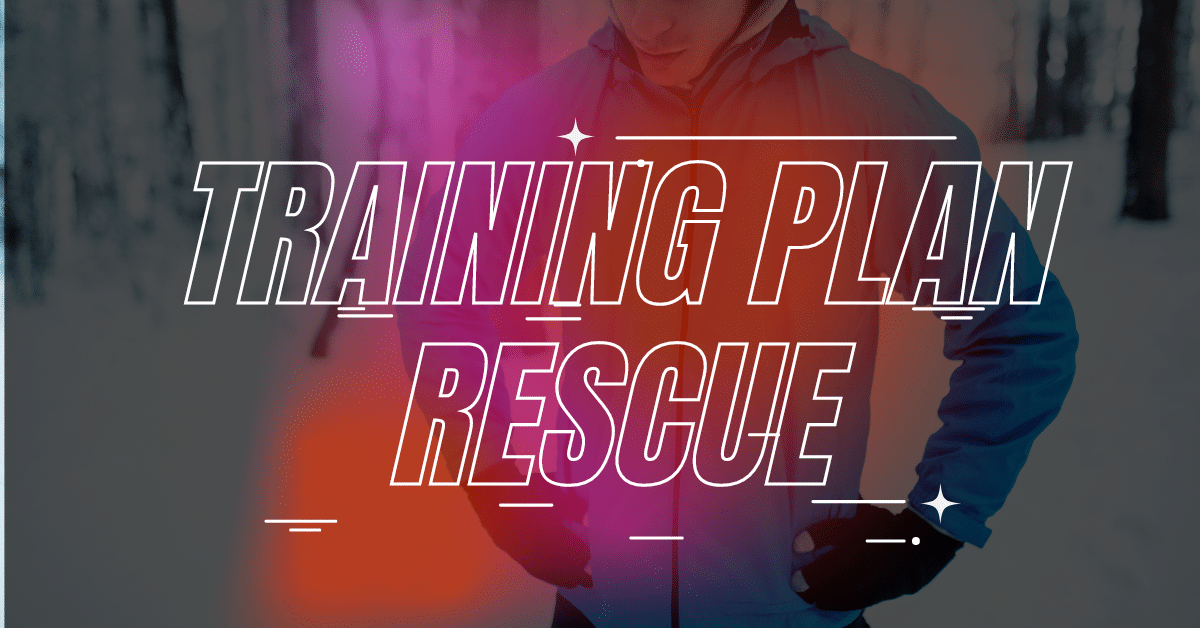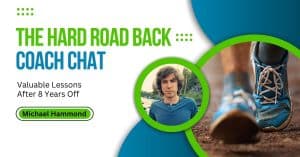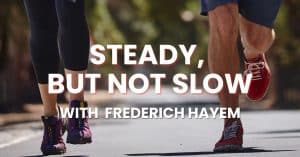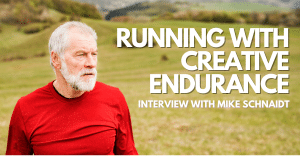Nick ran cross country in high school, setting a 5k PR of 17:49 way back in 2005. But in 2012 he developed a severe case of achilles tendonitis which caused him to hang up the racing shoes for almost 10 years!
Now he’s back to training – but he’s having some trouble. Some injuries, overly intense workouts, and in general he doesn’t feel like he’s quite on track to reach his goals.
What could be behind the present difficulty? We have some ideas!
On this weeks Training Plan Rescue, Coach Michael covers:
- How to effectively come back from a big running hiatus
- If and when you should emulate what the pro runners do
- We’ll set Nick up for success moving forward.
Anyone had similar difficulties as Nick? Let us know in the comments!
Hello fellow runners, I'm your host, Fin Melanson and this is the run to the top podcast podcast dedicated to making you a better runner. With each and every episode. We are created and produced by the expert team of coaches at runners connect dot net where you can find the best running information on the internet as well as training plans to fit every runner in every budget. This time we are back with another training plan Rescue episode and in this edition, coach Michael Hammond evaluates the training plan of a 33 year old runner named Nick who is returning to the sport after a 10 year hiatus and experiencing some difficulties along the way around injuries, workouts and goal completion, Michael has some solutions. So let's listen to what he has to say, Collagen supplementation has been shown to help runners dramatically improve recovery and reduce injuries. Later in this episode, we will look at the exact science on collagen supplementation and how you can save 10% at new topia.com backslash.
Run to the top genius. If you're looking for better and safer headphones while you run, then you need to check out the dance there. Open ear design delivers premium sound while still allowing you to hear your surroundings to stay safe. I'll tell you more about them later in this episode. But if you're looking for a great New Year's gift for the runner in your family. Head to ola dance dot com backslash. R T t t to learn more. Hey, runners connect listeners. Welcome back to another training plan Rescue where you send us your busted training plan and we come to the rescue coach, Michael Hammond here, sub four miler and head coach here at runners connect today. We'll hear from Nick, a 33 year old with an interesting running story. Nick ran cross country in high school setting a five K. P. R. Of 17 49 way back in 2005, but in 2012 he developed a severe case of achilles tendonitis bad enough that he wouldn't even wear pants because they aggravated the tendon so much, which caused him to hang up the racing shoes for almost 10 years now he's back to training, but he's having some trouble, some injuries, some overly intense workouts and in general he doesn't feel like he's quite on track to reach his goals.
So today we're gonna talk about how to effectively come back from a big running hiatus if and when you should emulate what the pro runners do and we'll set nick up for success moving forward. Okay, here's Nick, my name is Nick, I am 33. I've been running consistently for the past year and a half. I've been focused on five K. Training before the past year and a half or so, Maybe run 23 days a week, 5, 10 miles a week at the most. Nothing serious. Not real training. Um, but I started running in high school, uh did cross country, my and track my freshman and sophomore years and then went into my junior year and got interested in other things and quit. Um But now I want to realize my potential about how fast can I get. So this is an interesting one, even though Nick is only 33 before the last year or so, he hadn't done any sort of legit training for almost a decade. That's a huge amount of time considering that at runners connect, we often have people ask us how much fitness they lose not running for just two weeks.
Now. Nick did run two or three times a week during that time. That's crucial. But two or three easy jogs is a far cry from intense, heavy training. Here's what he's been doing. I've been really focused on five K training in the past year and a half, building up my mileage, about 40 miles a week was pretty good for a while and I bumped it up to about 45 average peak is about 54 miles per week right away. You can tell nick is not messing around 45 to 50 miles a week, some weeks even higher. Really focused five K training and listen to some of the workouts he's been doing. So I do workouts twice a week, one day would be tempo threshold stuff and then the other day would be more vo two max interval work. So a typical tempo workout would be to buy two miles at my threshold pace. Um So I would do that about 6 20 a mile. Um take a three minute break between that, do another two miles. Another workout would be intervals at vo two max.
Um six by 800 m would shoot for about 5 50 a mile with a minute and a half rust. Another workout that I do be five times 1000 m, push that pace a little bit, the 5 45 a mile, give myself two minutes rust. Those are great workouts, no doubt, but let's zoom out for a moment. Remember, Nick didn't do any organized workouts or training for almost a decade now, Nick did ramp up his mileage gradually, smart guy, but this is still a good opportunity for our first lesson from Nick's training and that is, if you don't use it, you lose it. But that doesn't mean it's gone when you take a big running hiatus, think several months to several years, you do indeed lose fitness, but you lose more than that. You lose muscular fitness, neuro, muscular connections and the strength in the tendons and joints that you need to run. That's all to say. Coming back from a big running hiatus is not an easy task. I of course won't hijack Nick's story here, but I'm experiencing this personally. I'm the same age as Nick, we're both 33 I stopped running in 2016 and I didn't even do those 2 to 3 jobs a week.
I did almost no running for the past six or seven years now I'm on the comeback train and it ain't easy things that used to be easier now hard, you can't just, you know, go for an easy hour without risking injury. Paces are way, way slower and my muscles and tendons just feel weak compared to what they used to be able to withstand with running. So if you're in a situation like me and nick or if you're running just isn't going the way you want and you want to do a big reset a great idea for many people, we can talk about that more in depth in another episode, Here's what you should do First start with run walks. Some people can start with full on runs, you know, like Nick, because he was doing 2-3 runs a week, even if they were short and easy, but for others, run walks worked tremendously to build up your running and you're running muscles safely start with 30 seconds of running at a time with plenty of walking between and slowly build up to running a mile or two at a time, then you're ready for full runs. Second strength train. Some might think the strength training comes later when you're trying to run faster and do harder workouts false, you should be doing this up front. In fact, if you can start doing this a month or so before you start running even better, build up your body's strength, especially in your hips, lower legs and core.
This will make the comeback to running much smoother and prevent big injuries. Third, don't compare when Nick First started doing harder workouts. He probably hated imagining how easy those workouts would have been for him back in 2005. But that's a huge mistake after all, that's over 15 years ago here at runners, connect a lot of our runners talk about decade Prs basically your pr any given decade of your life, so your twenties, thirties, forties, fifties and so on all have their own P. R. S. This is a way to immediately distance yourself from, you know the old days and understand you're on a new path and that's the case, even if your new path can connect with and even surpass your old one, like with Nick who I believe can run much faster than he did back in 2005. So again, start with run walks, which is basically a way of saying, build your training up gradually strength train, get those muscles and tendons ready for the training to come, don't compare you are, who you are today and you'll train smarter knowing that now Nick did a really nice job of that, there were some bumps in the road, but Nick got himself back to a high level of fitness in a smart way.
Listen to how Nick organized his training. The bulk of my training was easy miles, they say do 80 20 but really I was probably doing 85 15 or some weeks, 90 10. Um, just because I know my aerobic capacity was, has been one of my weaknesses over the past year and a half. Um, I do a lot of my easy runs in the zone two on a five zone scale, um where I'll take my max heart rate and take my resting heart rate and figure out my zones from there. And um, and typically a nine minute mile is a good mile and a 10 minute mile is on the slower end of my zone too. So it's really slow relative to my race pace for my five K. But um, I do find that I enjoy that pace. I know this is the training plan rescue, but this part I really can't rescue because he did such a great job bulk of his running easy, keeping the easy runs truly easy, notice how he says how much slower his runs are than his five k pace.
Like it's a bad thing. That's a great thing. Nick so often when you come back from a hiatus full of motivation and zest, you want to do some of those, you know, out of the park type workouts. You want to hammer it. You want to get those results fast. But that's not the way like Nick said, you should be doing at least 80% of your volume at an easy effort at any time even more. So when you're on the comeback trail. So tremendous work nick. Now let's zoom back in and talk about some of the knicks harder training. Remember he mentioned doing two workouts a week, one threshold and one vo two max or interval workout, then a long run on the weekend sounds good on the surface, but let's dig a little deeper. 1st. He mentions doing a medium longest run the day after his long runs, my weekends. So do my longest run on a saturday the next day. I would do a semi long run, so I'd end up doing 20 miles total over the weekend. So I would do about 12 12.5 saturday, bounced back sunday with eight miles. I just heard that was really helpful. Now those can be helpful. Any of our runners connect athletes know we commonly do back to back longer days in marathon training to fit a good chunk of mileage in 24-36 hour period.
But for five K training and where nick is at in his progression, I just don't see the benefit. Think of it this way. That's 20 miles in two days over the weekend. I know most of it is easy, which is great, but that's still a hefty number of miles on your legs. Now you go into the week with a workout on monday on tired legs. I'd much rather see a short 45 mile run on Sundays. Then we could do the medium long run during the week spread throughout so that there's optimal recovery between all the harder stuff. So we could do something like like monday tempo, workout, Wednesday, medium long run, friday intervals and saturday long run. I don't mind the long run being the day after the intervals in five K training because it's not that long and it's all easy versus in marathon training where they're, you know, 16, 18, 20 miles with some faster stuff. So this isn't to say the eight mile day after the long run is ruining next training. It's more just the approach. Then he talks about doing double threshold workouts. I tried doing double threshold intervals. So in the morning I would do some faster threshold intervals um like six minutes at my threshold and then take a rest and continue doing that and then go to work and then after work I would do try to do a faster threshold.
Um not quite go to max but a faster threshold workout. So this is an idea that's gotten popular over the last few years due to Yacoub in Britain and his brother's doing them the Norwegian legion for those who don't know Yacoub won the olympic 1500 m in 2021 then won the World championships 5000 m in 2022 all before he turned 22 years old. This brings us to the second lesson from Nick's training, You shouldn't always try to emulate the pros, they're at a different level, they're training for a different goal and they're living a different lifestyle. This doesn't mean the pros don't have anything to offer their inspiring, they're fun to watch and they often do give helpful tips on what got them where they are, but those tips should be taken with a grain of salt. Let's look at Jacob Engebretsen, this guy has been training like a pro since he was 10 or 12 years old. He's had his two older brothers, both high level pros to look up to and emulate. He's a freaky talent, one of the greatest European running talents of all time And perhaps most important to this discussion. He's a pro athlete, he has a mega Nike sponsorship deal meaning he can eat sleep, train, repeat day after day, week after week, month after month.
Not only can he, but that's literally his job. Oh and he's 22 years old, that definitely helps. He's young and resilient. So double thresholds or even double workouts in general are a great example of when not to emulate the pros, these guys will do the morning workout, which they did off a solid eight hours of sleep the night before I go home, eat, relax nap, relax some more, then head out on their second workout compare this to Nick who probably had to rush out the door early in the morning for the first workout, Slam a quick breakfast before heading to work, spend all day at his job, then came home for the second workout. Two vastly different situations and look at what those workouts did for Nick. I think that is exactly when I started feeling that runner's knee injury and I actually think I remember the exact moment when that happened in the afternoon session. So for nick bag the double workouts, let's stick to one run per day unless your mileage gets to 60 plus miles a week or so, even then, the most I'll ever recommend is a second easy run in the day. So for instance, an easy 3 to 5 mile jog in the evening after a workout in the morning.
Once known mainly for helping improve skin and wrinkles, collagen peptides are one of the latest supplements that take the running world by storm. In our never ending quest to improve recovery in case you didn't know collagen is a strong and flexible protein found in our bones and connective tissue. With healthy and strong collagen levels, your ligaments and joints will be more flexible and your body will better handle the pounding that comes with running so many miles. In fact, a 2020 literature review of 15 studies on collagen supplementation and recreational runners showed that collagen supplementation, improved joint pain and recovery from joint injuries, reduced muscle soreness and time to recover from exercise and increased muscle protein synthesis, adding collagen to your daily recovery routine can dramatically improve your recovery and ability to stay healthy If you want to try collagen yourself, our recommendation is college genius because it contains an efficacious dose at 2.5 g of collagen with no added fillers or proprietary blends.
As an added bonus. It contains hyper concentrated forms of four of the best health boosting mushrooms. Lions main Saga, Corgis Eps and ray. She mushrooms have been shown to be one of the most effective brain boosting supplements you can take for morning runners taking collagen in the mornings. Post workout with the added cognitive support will also help you improve mental clarity in the morning without taxing your adrenal system like caffeine does. So if you're interested in trying it out, head to new Topia dot com backslash run to the top genius and use code run 10 during checkout to save 10% in Utopia. The company which makes college genius, is so confident you will love this product that they offer 365 day money back guarantees again that special link is no utopia dot com backslash run to the top genius and when you use code run 10 during checkout, you'll save 10% when you're running outdoors.
Hearing your surroundings like traffic and other runners around you is critical to staying safe and healthy. But listening to your favorite podcast or music can also be essential to staying motivated and enjoying those long miles. That's why we're excited to partner with audience premium headphones designed specifically with runners in mind. The unique design of their headphones allows you to listen to your favorite music and podcasts while running yet still hear everything going on around you so you can stay safe. But my favorite part is that they're open ear design means your ears will never get tired or fatigued even after two hours or more of listening. That makes them perfect for those super long runs. Plus their dynamic driver is three times bigger than most headphones, which allows them to deliver superior sound while still being comfortable. So if you're looking for better and safer headphones while you run, there's no better choice than Ola dance. And to help you out, we've locked in a special deal with hula dance for runners connect listeners. You just have to visit Ola dance dot com backslash.
R T T. T. And use the code R. T. T. T. To save 20% on your purchase. That's O L A D A N C E dot com backslash. R T T T to save 20% now that you have an idea of Nick's training, what else can he do to improve? Moving forward? He's on a great path after all, he's not far off his five K. Pr been able to get my five K down now. It's about 18 30. Um, back in the day 2005 was 17 49. So I'm really trying to break that. Um, and see how fast I can get. So it's not like his training is busted. This is less of a training plan rescue and more of a training plan improvement. We've already discussed two points. Get rid of the double workouts and don't cram too much mileage. And on the weekends, here are some other ways nick can improve, moving forward first, relax your tempo workouts.
I love that. Nick is prioritizing a weekly tempo or threshold session. That's fantastic. But as I'm listening to him describe the workouts, I can tell he's being really strict with them. Listen, so a typical tempo workout would be to buy two miles at my threshold pace. Um, so I do that about 6 20 a mile 6 20 paces right at the fast end of where I would want Nick doing his threshold work. I wouldn't want it any faster. So often we think of training paces in terms of laboratory conditions. That's the problem with giving super exact paces, especially on tempo work. It's easy to assume flat terrain, perfect weather, all that. But reality is often different. What if it's a hot day and nick didn't get much sleep last night, then I definitely wouldn't want him forcing 6 20 paces. Let's go with the range here. 6 20 to 6 45 pace. Start on the slower end, progress to the faster and as your body sees fit, that means some days you might work down to 6, 20 other days you stay right at 6 45. Either one is great. It's all about the effort here. Next don't overdo the vo two max and interval work.
You heard Nick talk about his interval workouts, It sounds like he's doing them at just the right intensity and not over doing the workouts on their own, but these don't really need to be done weekly, at least not year round. Remember the five K is still 80% aerobic. That means we're relying heavily on our aerobic system when running a five K. That's easy to forget when you're in the marathon world where the five K is seen as a speed event. I'd like for Nick to do those more sparingly. Instead bump up the tempo and threshold work, but add in some speed on top. I call this sprinkling in speed for example, nick can do let's say 8 to 10 by 1000 m at threshold in that range with one minute rest. Then he can do some 300 m reps at five K. Pace with two minutes rest afterwards. Or let's say he does his 20 minute tempo, finish it off with some short hill sprints to work on running for him and short end speed. Then we can save the vo two workouts for that more race specific phase 6 to 8 weeks out from race day Third, it's time to strength train with the injuries, Nick has experience. It's clear he needs to add in some proper strength work. Runner's knee, achilles, tendinitis.
These are classic overuse injuries that are generally caused by ramping things up too quickly and or poor form and strength. It doesn't take much here. You can get a huge bang for your buck with only 2-3 short strength workouts a week, incorporate core work, hip strengthening and mobility balance and single leg exercises and some upper body and back work. Here's an example workout. Two by 30 seconds of each push ups, crunches, front planks, side planks, supine planks, donkey kicks, knee circles, glute bridges, single leg balance and T poses that last one. You lay on your front and lift your arms out to the side, like the letter T. That's a 10 minute workout that covers almost everything you need do that three times a week and you're set Okay, Nick, I mentioned this earlier, but truly this isn't really a rescue of your plan. More so a slight alteration to your current path, you're so close that 1749 is in your sights. I have a feeling that if you were to keep doing exactly what you've been doing, even if some of it isn't perfect, you'd still beat that really soon. But you said you want to truly see what you're capable of.
So let's do it right good luck to you nick, I look forward to seeing your progression, especially since we're in such similar situations. You're further ahead on the comeback trail, but I'll be there too. Thank you everyone for listening. If you want to be featured on the next training plan Rescue Head two runners connect dot net slash rescue and I'll tear your training to pieces. Just kidding. I want you to run faster. So again, go to runners connect dot net slash rescue and let's get faster together. Thanks again for listening. I'll see you next time. What were your thoughts on that training plan? Rescue Michael had a lot to cover, especially around how to effectively return from a running hiatus. If and when to follow the lead of pro runners and what will set up nick for success moving forward, we'd love to hear what resonated with you as well as any outstanding questions you may have. So leave us a comment on the facebook or instagram post of this episode to get the conversation started. Thanks for listening to the run to the top podcast. I'm your host, Finn Melanson. As always, our mission here is to help you become a better runner with every episode. Please consider connecting with me on instagram at Wasatch, Finn and the rest of our team at runners connect.
Also consider supporting our show for free with a ray on the Spotify and Apple podcast players. And lastly, if you love the show and want bonus content behind the scenes experiences with our guests and premier access to contests and giveaways. Then subscribe to our newsletter by going to runners connect dot net back slash podcast until next time. Happy Training.
Sign up to receive email updates
Enter your name and email address below and I'll send you periodic updates about the podcast.
Connect, Comment, Community
- Follow RunnersConnect on Instagram
- Join the Elite Treatment where you get first dibs on everything RTTT each month!
- Runners Connect Winner’s Circle Facebook Community
- RunnersConnect Facebook page
- GET EXPERT COACHING AT RUNNERSCONNECT!
This week’s show brought to you by:
CollaGenius:
Adding collagen to your daily recovery routine can dramatically improve your recovery and ability to stay healthy.
If you want to try collagen yourself, our recommendation is CollaGenius because it contains an efficacious dose at 2.5g of collagen with no added fillers or proprietary blends.
If you’re interested in trying it out, head to nootopia.com/runtothetopgenius and user code run10 during checkout to save 10 percent.
Oladance:
If you’re looking for better and safer headphones while you run, then you need to check out Oladance.
Their open-ear-design and dynamic drive delivers premium sound while still being comfortable and allowing you to hear your surroundings to stay safe.
To help out, we’ve locked in a special deal with Oladance for Runners Connect listeners.
Just visit oladance.com/RTTT and use code RTTT to save 20% on your purchase.







